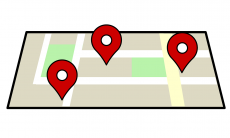Back in the summer, I wrote a pair of posts about Social Media and the FIFA World Cup in South Africa, and Mike Moran talked about reaching your audience during that big event. Well, one can argue that elections and politics can generate passionate discussions that rival or even surpass those by soccer fans, and last much longer than the 30 days of the popular tournament. Following a Twitter list of World Cup players is entertaining, but a list of actual head of states can give us a unique glimpse on how diplomacy is shaping up in the Social Media space. If you want to know which heads of state are using Twitter, how active they are and their following/follower patterns, you came to the right place

Image by National Library NZ on The Commons via Flickr
In the past month, I had the unusual experience of being in Brazil during the first round of the general elections (October 3), then back to Toronto during the mayoral election (October 25) and the second round of the Brazilian presidential elections (October 31). On top of that, the US midterm elections were a hot topic around the globe last week, making it almost impossible for me to ignore politics for the last 6 weeks or so. Naturally, politics is a hot topic, and not one that I’m particularly keen in discussing in this blog. Having said that, I find fascinating to analyze the social media layer that is permeating the political scene globally.
Inspired by a TechCrunch article on Twitter diplomacy prior to the G20 meeting in Seoul this week, I used the @davos/g20 list curated by the World Economic Forum as a starting point to visualize how the heads of state are using Twitter. Being from Latin America, I supplemented that list with a few other verified accounts to have a better view of regional politics as well.
I tend to write long and convoluted posts, but in this particular case, a picture is definitely worth a thousand words. So, instead of a navigating the troubled waters of political analysis, I’ll just leave you with a number of visualizations covering different aspects of the Twitter social networking dynamics among this very select group, courtesy of my niece, Gabriela Passos, who’s visiting me this month.
Some points to consider when looking at these charts:
- They don’t show a complete picture: there might be more heads of state using Twitter, but I preferred to use a curated list from a reliable source as my main reference
- The number of people followed by these accounts is relevant in at least one subtle, but important way: you can only send direct Twitter messages to people who follow you. By following a large number of Twitter users, these leaders open a private channel that may reveal interesting insights that they would not have access to otherwise.
- The number of Tweets shown below is a historical cumulative total as of this writing, a metric that favors early adopters. A more interesting metric would be the frequency of tweets over time, but this would be too time consuming for me to get. I bet there will be some online tools covering that aspect some time soon.
The first infographic shows how active each of these head of state Twitter accounts are. It’s interesting to note that @whitehouse (1.8 million followers), @PresidenciaMX (150 thousand followers) and @Laura_Ch (11 thousand followers), despite being order of magnitudes apart in the attention they get, all tweet a lot. On the other side, @JuliaGillard, Prime Minister of Australia, only has 166 tweets, but a considerable number of followers.

The second set of charts reveals the followers / following pattern. France and Turkey tie on the low end, both of them not following anybody at all, while @Number10gov and @BarackObama follow over half a million people.

(c) Gabriela Passos 2010

(c) Gabriela Passos 2010

(c) Gabriela Passos 2010

(c) Gabriela Passos 2010

(c) Gabriela Passos 2010
Finally, the last diagram shows that, even among the head of states, you following your peer is not always reciprocated in kind. Cristina Kirchner, president of Argentina, follows a considerable number of her Latin American colleagues, but only two of them follow her back.

(c) Gabriela Passos 2010
One interesting side note: Seeing my niece creating all these infographics by hand, it became painfully clear to me that, despite all the efforts to develop better Social Networking visualization tools (Mashable has a good list here), we still have a long way to go to get the most from the information hidden under the surface in Twitter and elsewhere in the social media landscape.
After seeing the finished product, you can’t help but conclude that politics is but one more area where social media (and Twitter in particular) has become the place for activity that would have happened elsewhere, and has spawned activity that would not have happened at all.



